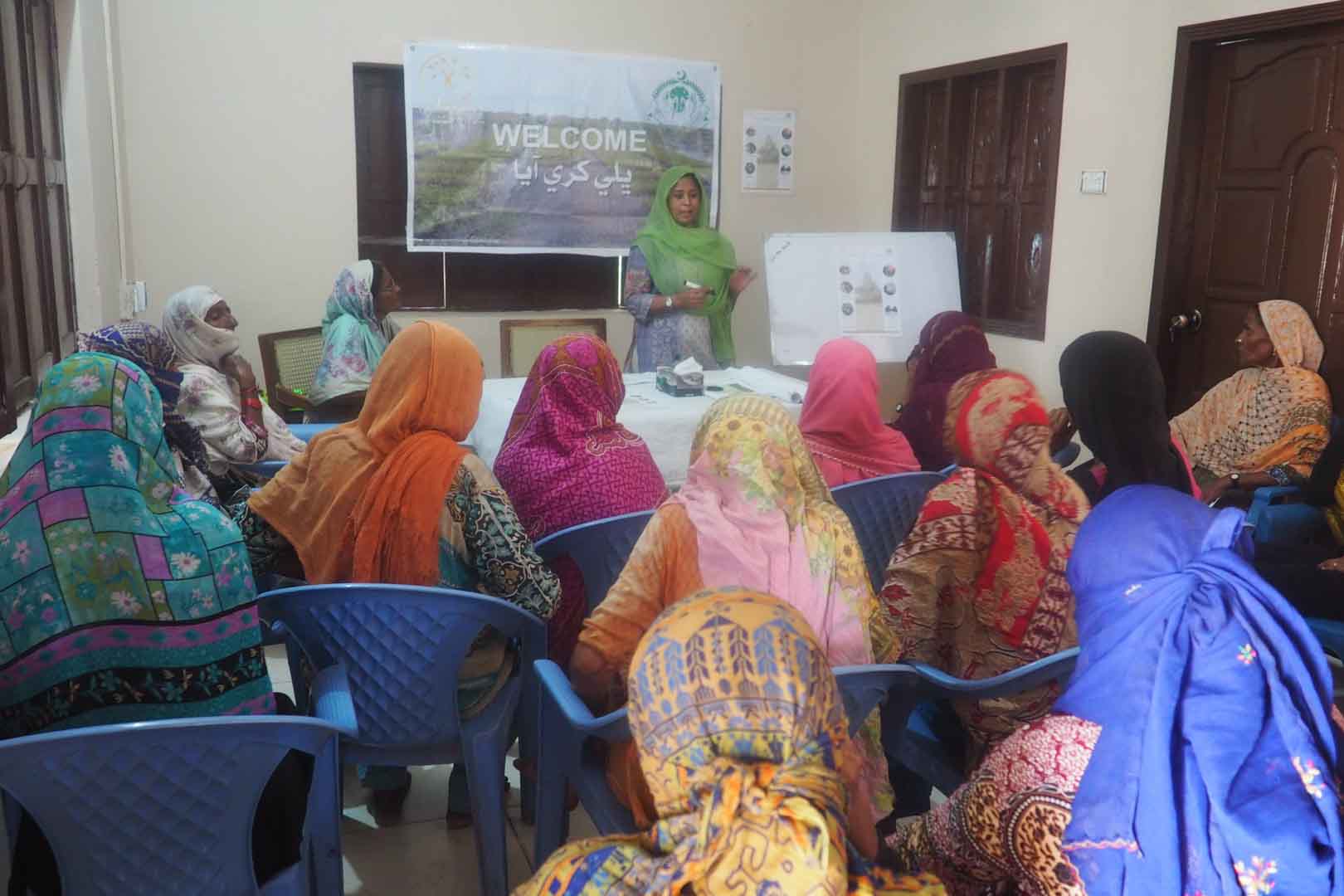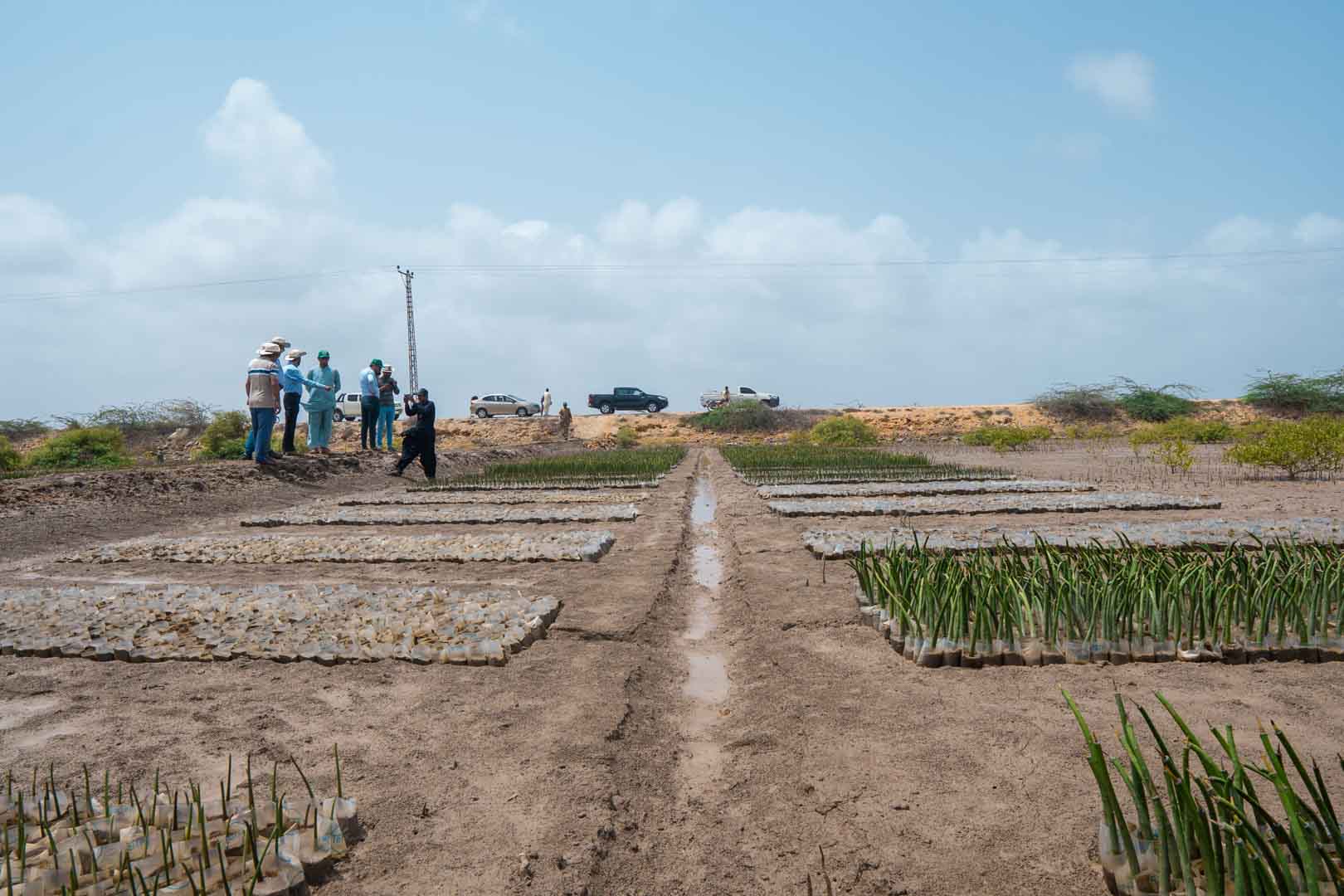Healthy mangrove forest in the Indus Delta
Where the Indus flows into the Arabian Sea in south-eastern Pakistan, a complex web of river courses, streams and islands has emerged, providing a home to valuable mangrove forests with unique biodiversity. However, intensive agricultural use and soil salinisation have damaged the fragile ecosystem, preventing the mangrove forests from regenerating on their own. Therefore, this project will reforest a total of 224,997 hectares of mangrove forest and restore wetlands. The intact ecosystems will store about 2,407,620 tonnes of CO2 per year.
The project provides even further benefits: The mangrove forests effectively protect against storm surges and the inhabitants of the 60 villages nearby are sensitised to a sustainable use of the ecosystem. The mangroves also provide spawning grounds for fish and other marine life. For the special impact in the areas of climate, community and biodiversity, the project was awarded the gold level of the Climate, Community and Biodiversity Standards (CCBS).

Blue carbon refers to the CO2 emissions stored by marine and coastal ecosystems. Among others, mangrove trees are significant carbon reservoirs because they remove more greenhouse gas emissions from the atmosphere than terrestrial forests. Their special root system, which has semi-earthy and semi-marine components, collects biomass from organic matter, such as dead leaves and branches, over the years and binds CO2 emissions from the atmosphere. This particular root system stores far more CO2 than other tree species.
Worldwide, mangrove forests have been destroyed for agriculture or aquaculture, or cleared for timber and firewood. By damaging these enormous CO2 reservoirs, large amounts of CO2 are released again into the atmosphere. To avoid this, blue carbon projects protect mangrove forests and preserve coastal habitats for a variety of wildlife species - both in water and on land. The dense roots of mangroves also serve as natural protection against erosion, flooding and storms in coastal regions. Blue carbon projects in the ClimatePartner portfolio are registered with international standards.
Explore our projects
Biochar for Climate Action, Healthy Soils, and Better Harvests

A certified climate project combined with additional commitment

Expansion of renewable energy generation in Asia

Ceramic water filters save CO2 and improve health

Improved cookstoves worldwide – for better health and cleaner air

A certified climate project combined with additional commitment

Powering access to renewable energy in Africa

A certified climate project combined with additional commitment

Restored ecosystems remove carbon

Turning degraded farmlands into healthy ecosystems

Improved cookstoves - better for health and the environment














